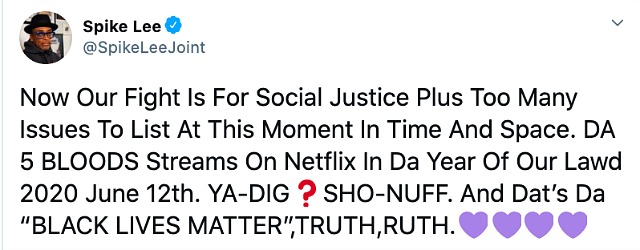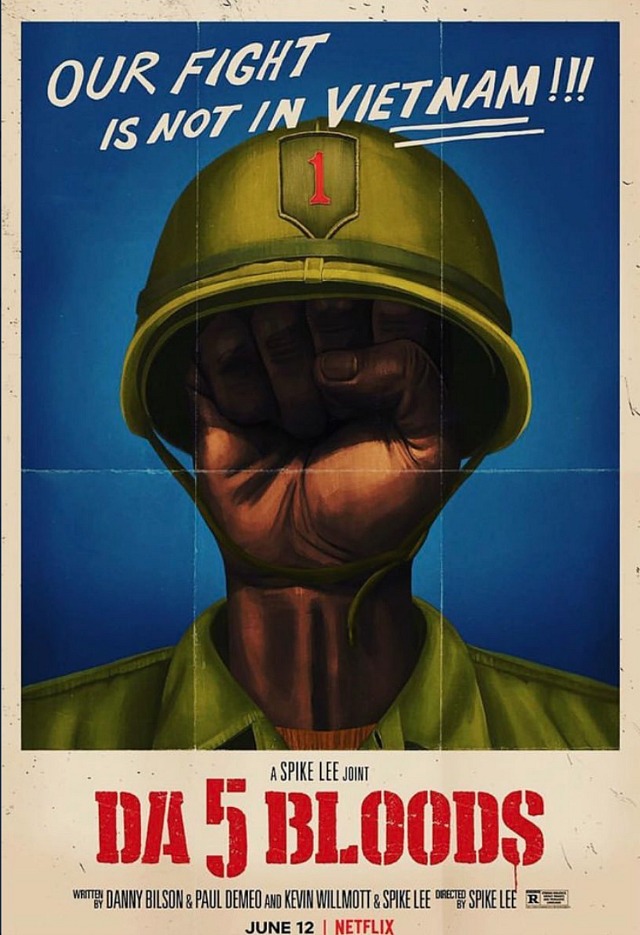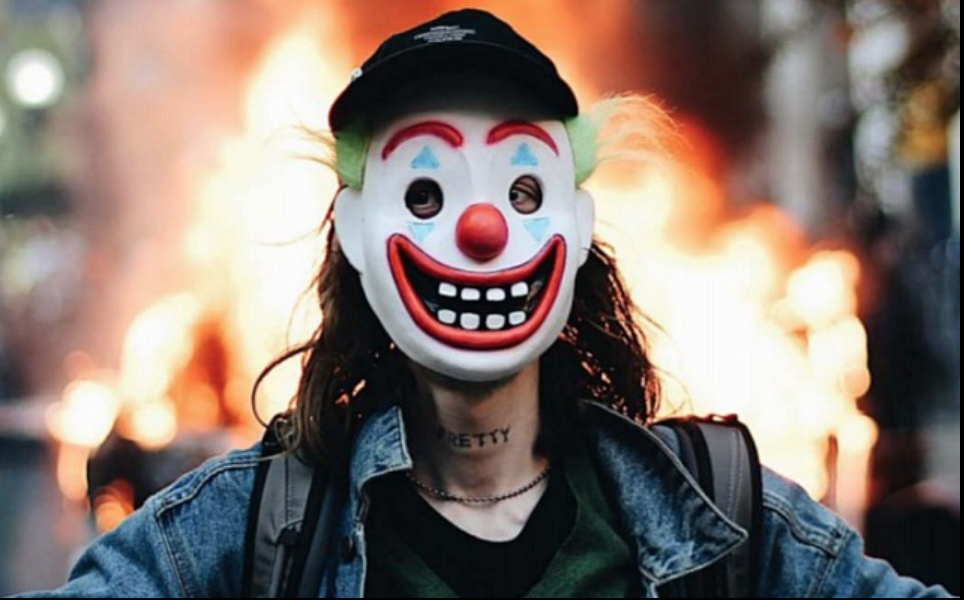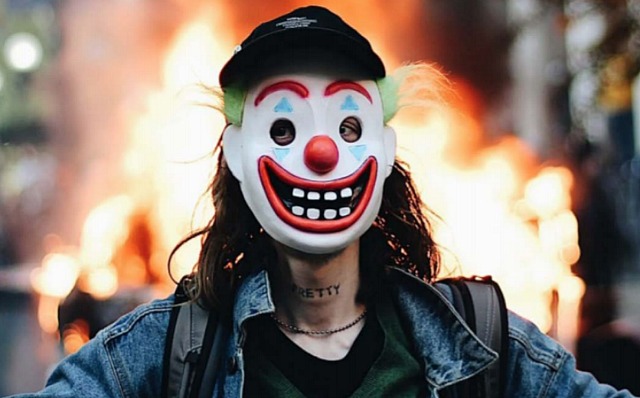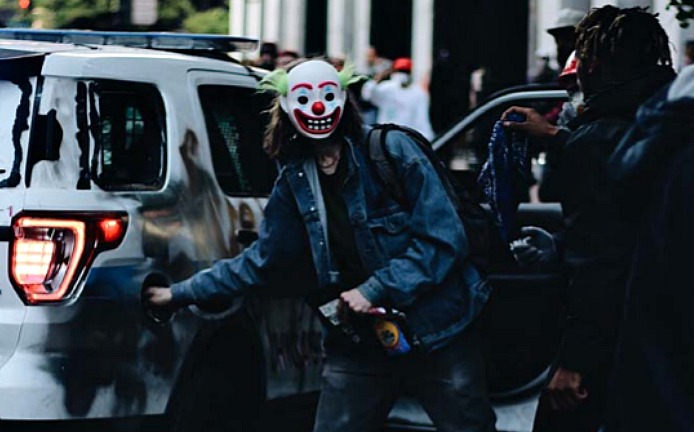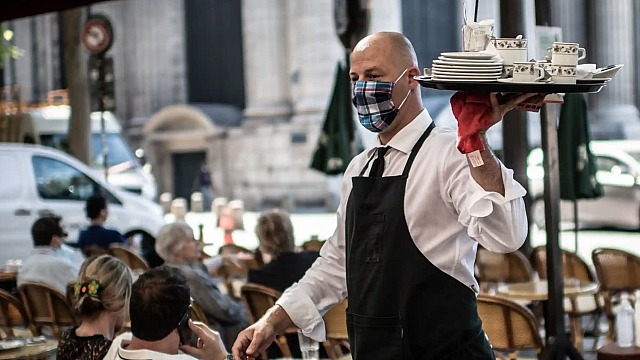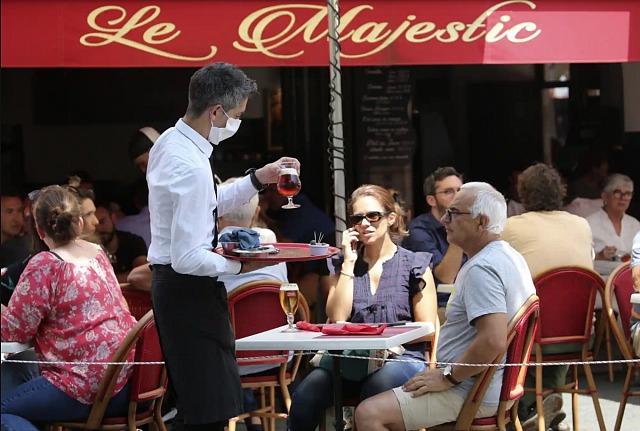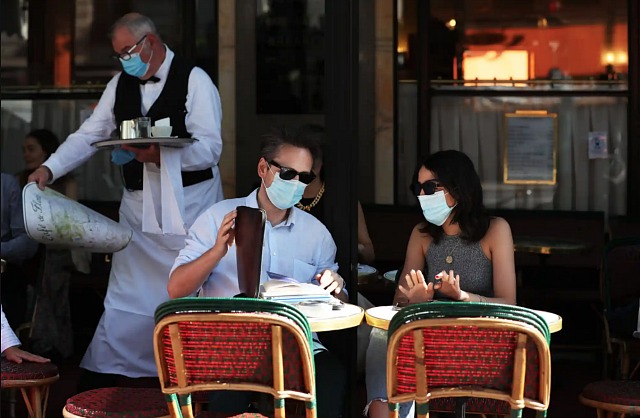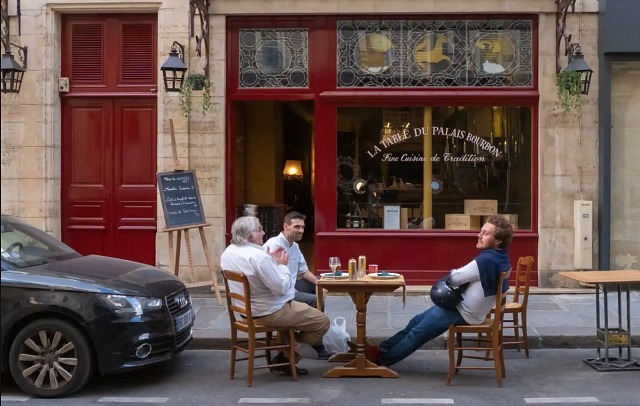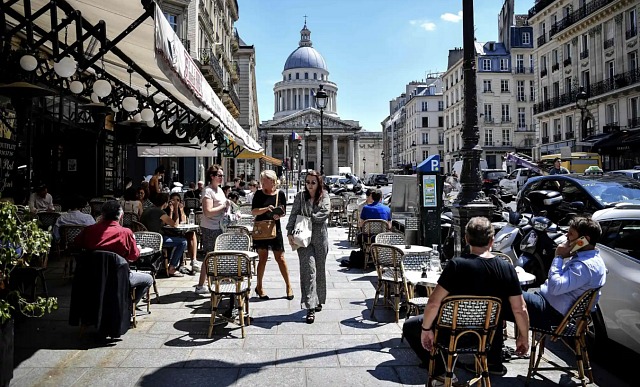Terrible convulsive traumas have sadly happened to this country from time to time. But they’ve never been long-term. A few days or a week, and then everyone began to gradually emerge and resume basic routines.
JFK was shot on Friday, 11.22.63 and buried on Monday, 11.25. Four days of emotional gloom and devastation. And on Tuesday, 11.26, the world slowly started again. The grief never went away, of course, but the wheels of commerce and culture began to turn.
John Lennon was murdered on 12.8.80. The shockwaves of anguish were devastating. Everyone wept. But after a few days or a week, the clouds began to dissipate.
The Los Angeles Rodney King riots lasted for six days (4.29.92 to 5.4.92). The aftermath seeped and simmered. Nobody ever forgot what happened. But on the seventh day the world began to move on.
The 9/11 recovery took a lot longer. The shuddering trauma aspects, I mean. But that was a first-ever attack on U.S. soil, and of course mass murder.
George Floyd was killed by four Minneapolis cops on 5.25. That was 9 or 10 days ago. The protests are still going on, and there’s another one happening in Los Angeles a few days hence (Hollywood to West Hollywood to Santa Monica). The curfew is still on, and a high percentage of stores in WeHo are boarded up.
So how much longer? The mindset and makeup of big-city police departments aren’t going to change overnight. Will the protests and demonstrations keep going for days to come? Weeks? Indefinitely?
My son Jett says “Nah…another week or so. It won’t stretch into July. It’ll wind down. Sometime next week, I predict.”
A friend says, “It’s not going to ease off in New York City until Cuomo and De Blasio call in the national guard. An organ of the NYPD released a statement yesterday saying they’re ‘losing the city.’ It’s winding down in some cities. But not in the major ones like NYC and Los Angeles. Who knows how long it’ll continue?
“Have you read or seen any legitimate journalist on TV or print actually condemning the looting? A good portion of the N.Y. Times staff is revolting because Times editors published an op-ed by Republican Arkansas Senator Tom Cotton calling for the military to stop looters. Not the demonstrators but looters, but it became a flashpoint condemnation thing among Twitter lefties.
“Nobody, it seems, wants to strongly condemn the looting. It’s as if the media are too scared to say that the protestors/rioters need a to stop because they would then be seen as ‘against the cause’ and racist.
“That’s a major dilemma for politicians as well right now. How to condemn what’s happening without sounding racist or against Black Lives Matter. The Republicans have no problem doing that because it’s part of their usual agenda to go against such things and not be PC, but Democrats are in a major bind right now.”
A couple of hours ago another friend called and said, “Remember social distancing? It was a very strict thing. But have you seen any social distancing since the marches, protests and lootings began?
Social distancing was essential to slowing down the coronavirus. But it stopped the economy and it raised the unemployment rate to something approaching 20%. And after a few weeks it drove the bumblefucks crazy. Their thing was “if grandma has to die then grandma has to die, but we have to live…we can’t just fold into a fetal ball and stop living. We have to work and keep our lives going.”
Was it wise to fraternize in churches and Arkansas pool parties and anti-Gretchen Whitmer protests? Probably not, as we’ve seen infection rates spiking in certain hinterland regions.
But the Democrats and especially the progressive left looks just as confused and compromised now.
Starting seven or eight days ago, social distancing was called off to protest and scream against systemic police brutality and racism. Social distancing was a big deal before Floyd’s death, but then it was put on hold…more or less forgotten as far as many protestors were concerned.
As I regard myself as a lefty iconoclast it pains me to post a tweet from James Woods (the actor, not the HE comment-thread guy), but I have to say that it’s a fair remark in this context:
Friendo: “Hypocritical is the right word to use. The narrative was that if you didn’t social distance then you needed to be shamed and ridiculed on social media. What happened to that? Is COVID-19 over? Has the media moved on to the next crisis? The 24/7 news cycle has become such a toxic enabler.”

